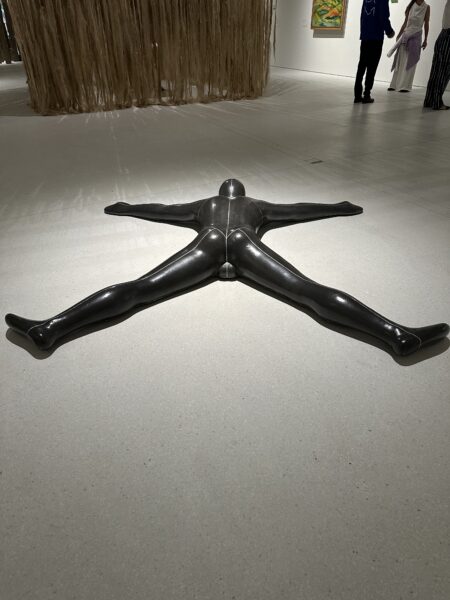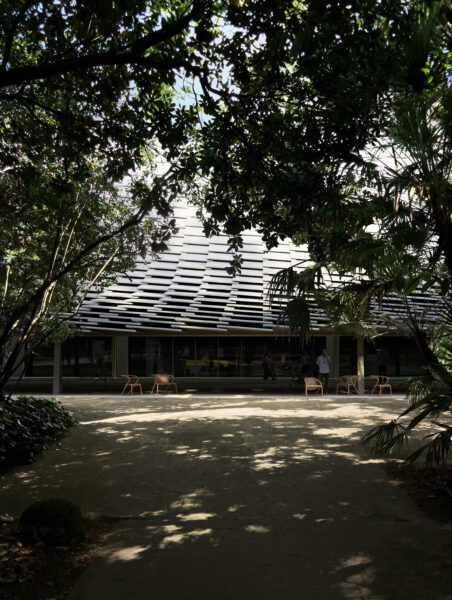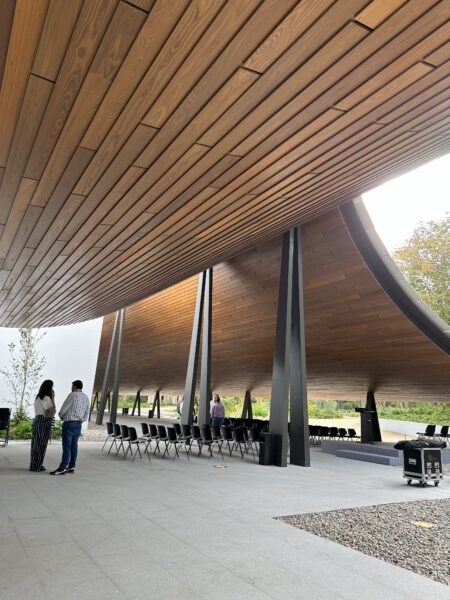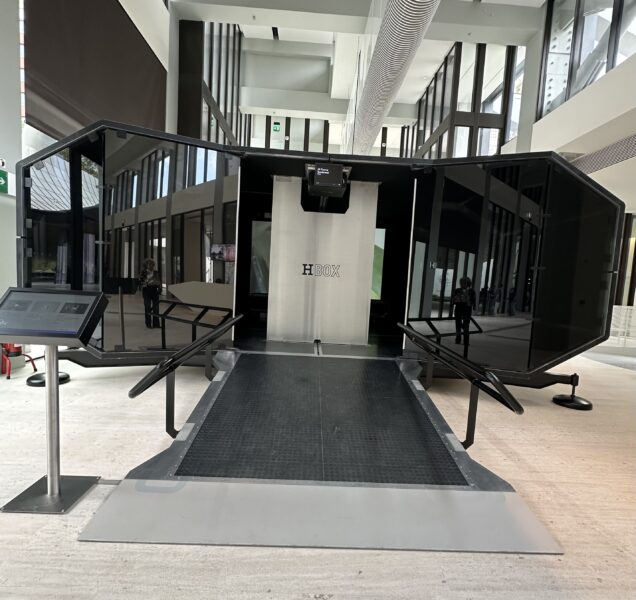
Antony Gormley
Fabulous collections
The Gulbenkian name is globally synonymous with fabulous collections. It first belonged to an Armenian businessman, Calouste being his first name (1869-1955), who managed at one time to obtain a 5% share of all oil transactions operated in Iraq. Rich thanks to this colossal jackpot, he became a seasoned art lover. He set up his foundation in Lisbon accompanied by a large grant fund. It may be often overlooked, but it has two sections in two separate buildings within the same pretty park where Lisbonites still come and sunbathe today.
Centro de Arte Moderna

CAM Lisbon
The one that displays “classical” art opened in 1969 and the other showcases contemporary art, although it is called “Centro de Arte Moderna” (CAM). The latter, inaugurated in 1983 as one of the great institutions of current art in Portugal, was closed from 2020.
Benjamin Weil
Now it’s reopened since 21 September and has spectacularly metamorphosized under the direction of French curator Benjamin Weil. “We are opening a new institution with an old institution inside. The aim is to be artist centric, to support the artists as much as we can to produce the most compelling works”.
Kengo Kuma
Overseeing these changes is the famous Japanese architect Kengo Kuma who has left the original building almost intact (except for subtle touches to comply with earthquake safety standards) all while digging so as to carve out 1000m2 of extra exhibition space. He has also made a grand architectural gesture by creating a gigantic canopy (120 metres long), all curves, at the entrance to the Centre along the entire length of the building.

To appreciate is to support.
To support is to donate.
Support JB Reports by becoming a sustaining Patron with a recurring or a spontaneous donation.
Engawa

The interior surface is composed of wooden slats. The exterior is covered in white ceramic square tiles that reflect the light. This very lyrical construction corresponds to the Japanese concept of “Engawa”, which creates an open space, not truly inside or outside. “The 20th-century museum was a box that contained art. In the future people will want an experience where the interior and exterior of the building are in a certain continuity,” explains Kuma.
Leonor Antunes
The new formula of CAM primarily produces a sensation of the museum space. Also due to the fact that the main exhibition room measures no less than 800m2, illuminated by large bay windows. Until 17 February it’s occupied by a star of contemporary Portuguese art, Leonor Antunes (born in 1972).
“I have a very special relation with this building and this foundation. They always supported me as a young artist. It has been an honor for me to give back. I also have an emotional attachement to the building. I often call this space a huge live box. Because it’s so transparent, I wanted to play with the light. I wanted also to play with the different scales. This room has 12 different heights. I don’t want to speak of an installation. Let’s speak about an environment. I wanted to create an environment where people are able to circulate and spend time with the work. The titles give an indication of the subjects of the works. But they dont’ have to understand everything”.
Melt into the environment

Leonor Antunes
The site is dotted with countless suspensions that dialogue with drawings on the ground and lamps. We can focus on analysing the different materials and links she has used to create these suspended objects. They all reference women artists. Or simply melt into this exceptional environment. It’s powerful.

Didier Faustino
Support independent news on art.
Your contribution : Make a monthly commitment to support JB Reports or a one off contribution as and when you feel like it. Choose the option that suits you best.
Need to cancel a recurring donation? Please go here.
The donation is considered to be a subscription for a fee set by the donor and for a duration also set by the donor.




